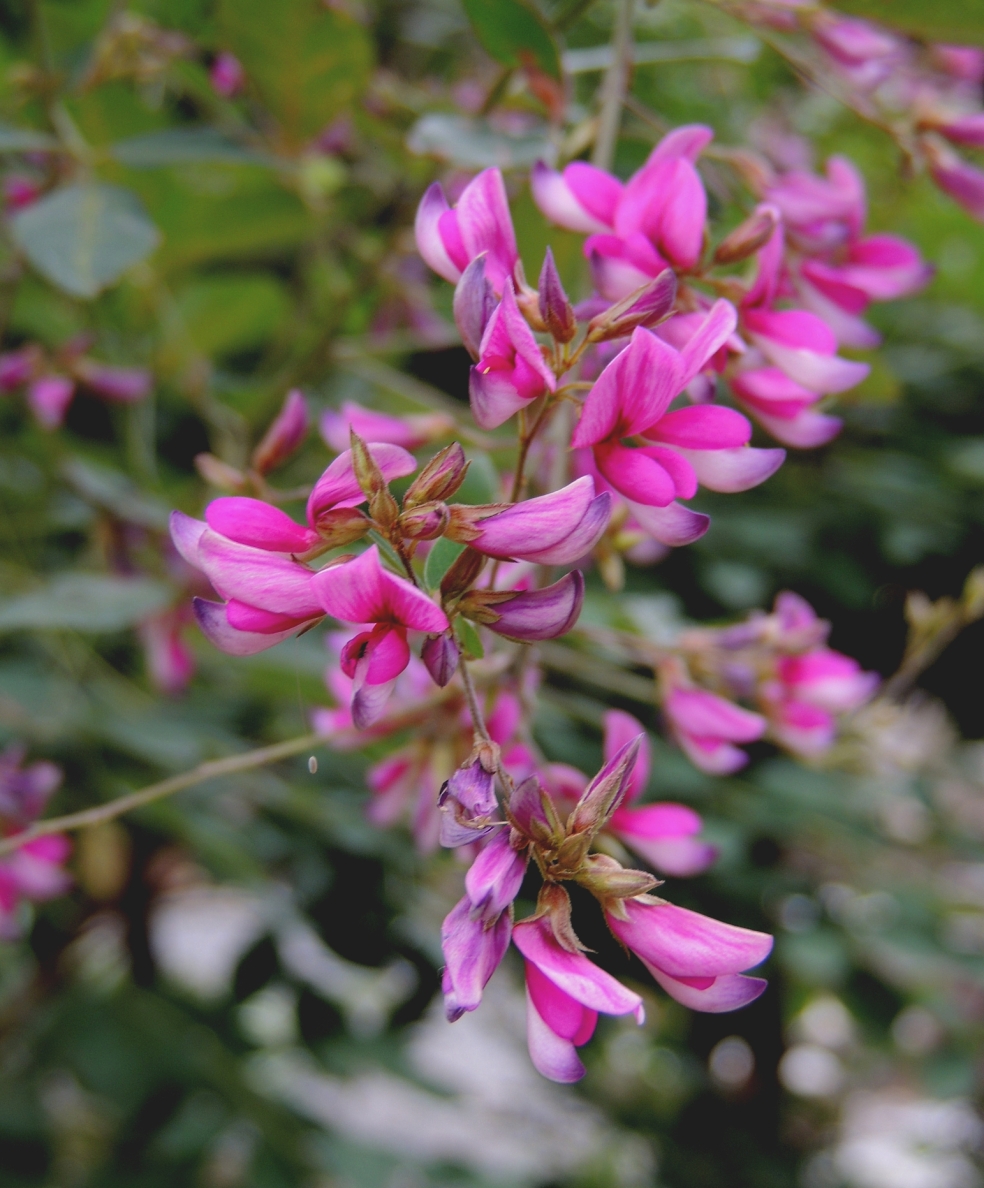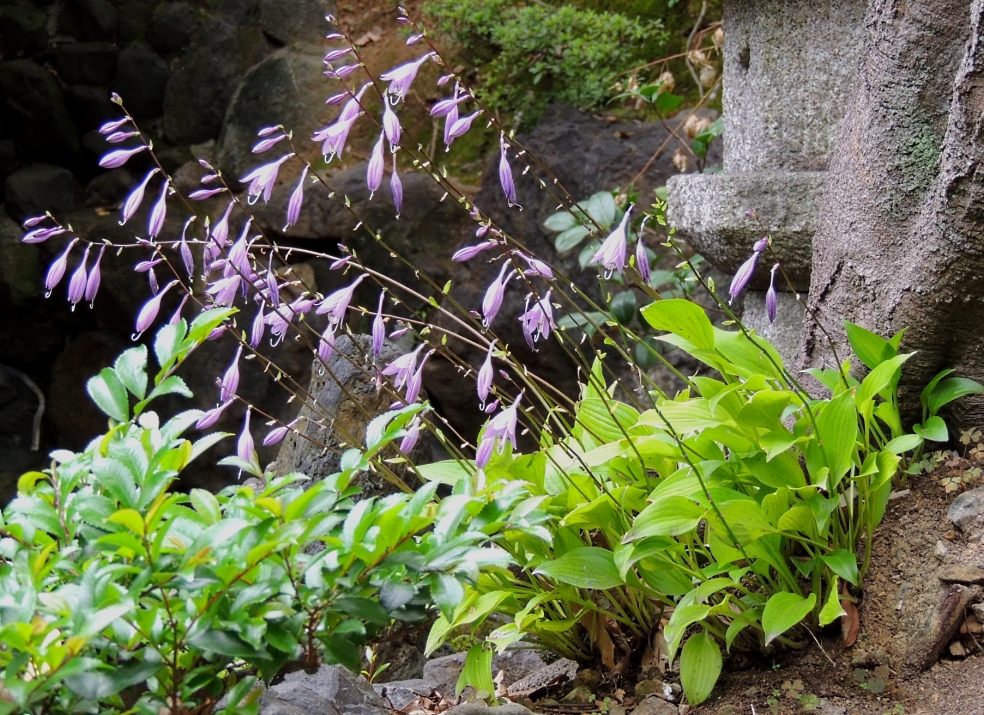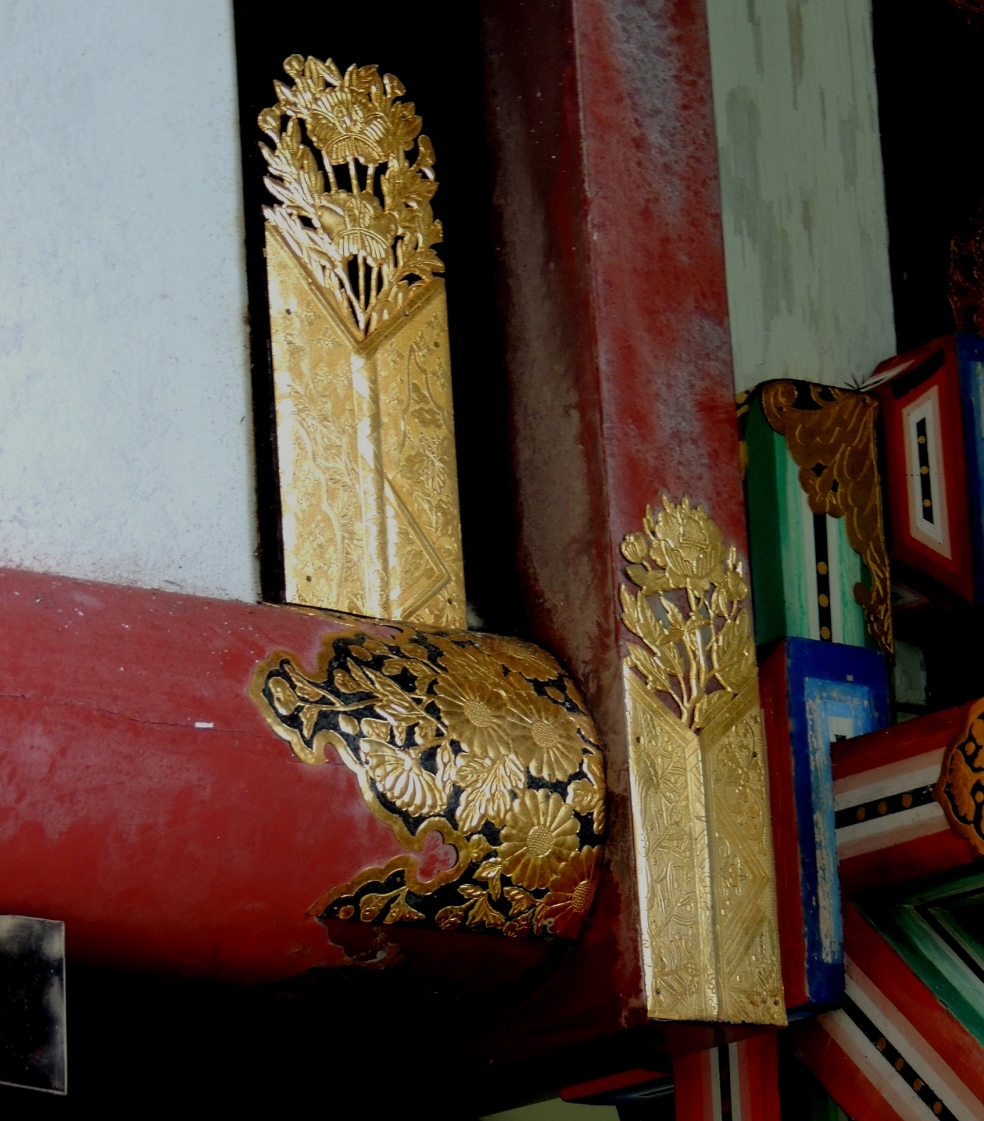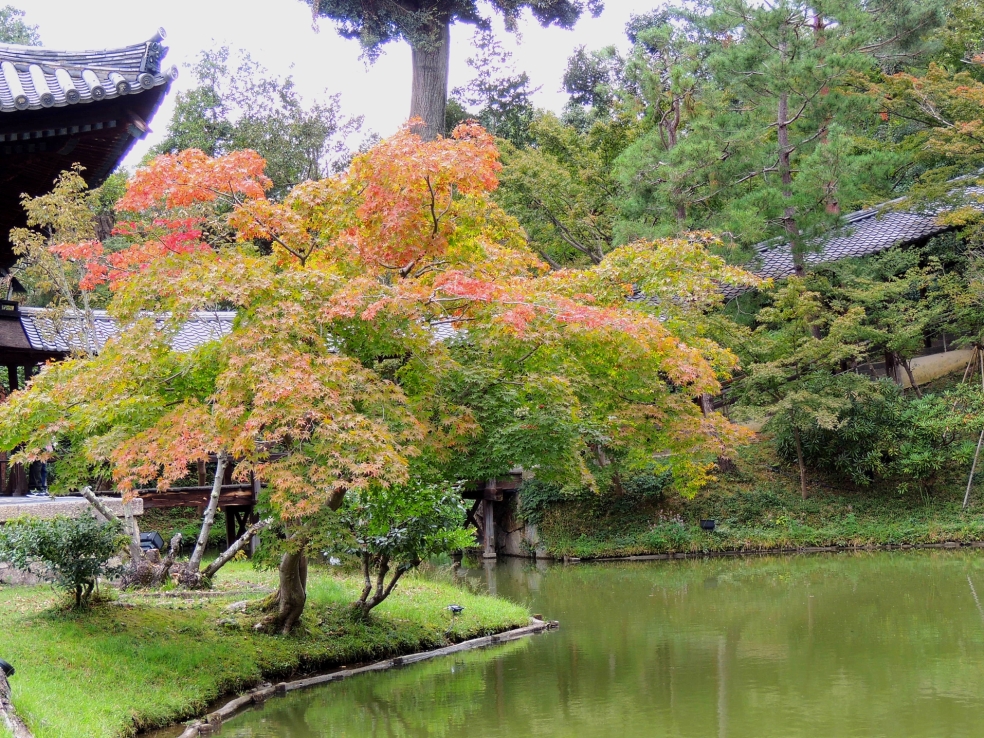
In Kyoto in October, whilst walking towards the gardens of Kodaiji Temple, I discovered an addiction for green tea icecream, or to be precise, a mixed double cone of vanilla and green-tea icecream. Absolutely delicious- and I am not a fan of green tea on the whole. But more importantly, we were bound for Kodai-ji quite by accident. Whilst wrestling with our Kyoto map an hour or so earlier, we had met a Canadian-Japanese couple, who offered their recommendations for visiting gardens- and their starter for ten was Kodaiji. So, inspired by this help, we cut to the chase and headed there, past the icecream shop. If you visit Kyoto you will discover why you need a starter for ten- there are so many fabulous temples and gardens, that the choice is dazzling.
Our helpers pitched it just right. Unlike others, Kodaiji is relatively quiet and peaceful, and with it being a grey day, we were there with just a handful of people. The Lady Nene had the Temple and the associated buildings built and gardens made in 1606 in memory of her husband, the famous warlord, Toyotomi Hideyoshi, who had died in 1598. Fire has ravaged the buildings on several occasions, and the once gilded palace is no longer gilded. The gardens were made by gardenmasters of the period and are now a gentle introduction to some of the main elements in classical Japanese gardens.
Above, you can see the beginning of the famous autumn colouring of specially selected trees and shrubs placed around the pond. And below, the very touching scene of a gardener squatting as she meticulously extracts small weeds with a tiny knife from a gravel area in the garden- the care and stillness of her work seemed to resonate with the entire feel of the garden. I stood watching for quite a while.
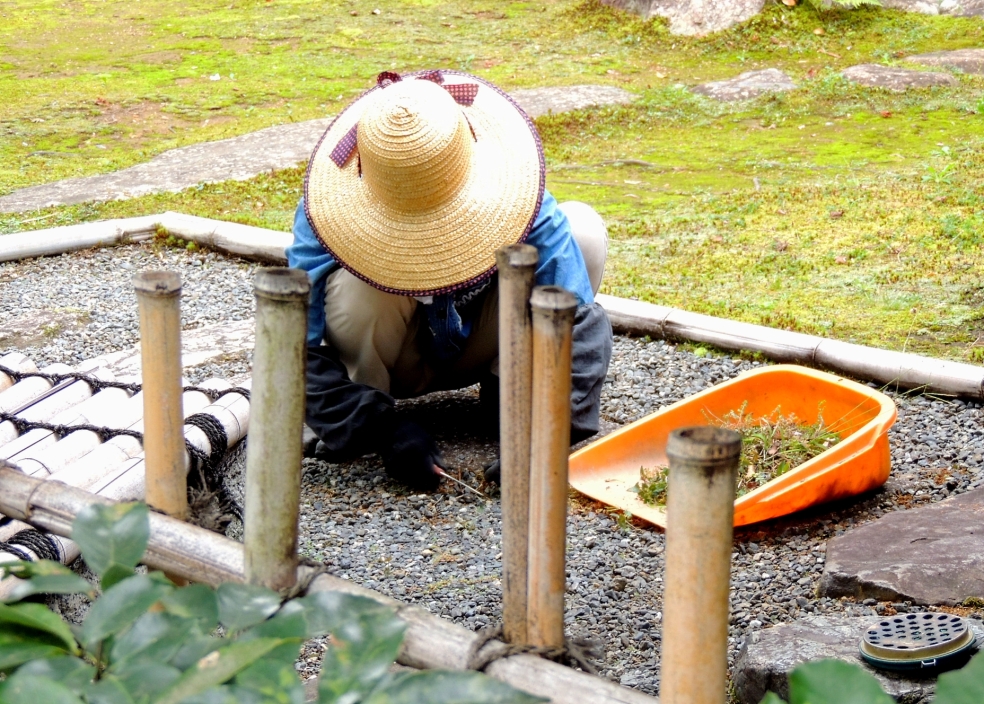
This is one of the original teahouses from the earliest days, Iho-an or the Cottage of Lingering Fragrances may have been built by one of the most important teamasters of the period. I really noticed the placing of plants and shrubs- each plant is positioned to create moments of harmony that punctuate, rather than mass plantings in the Western way.
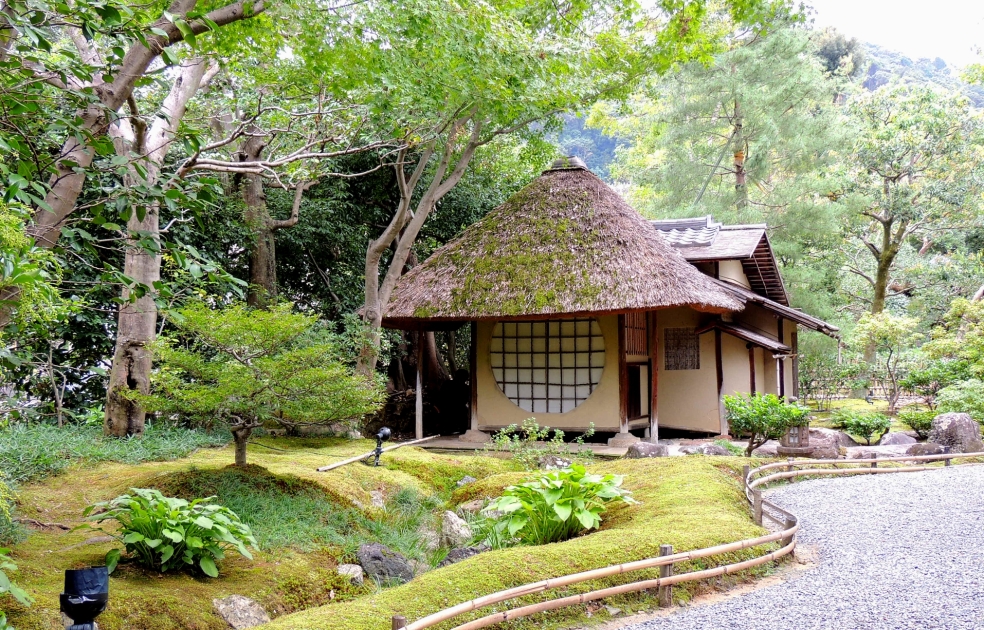
The Kaisan-do is a hall of remembrance linked to the garden across the pond by a wooden bridge, Kangestu-dai, designed for viewing the reflection of the moon in the water of the pond. Making a journey, following a path, promoting reflection and the observation of nature, all of these elements are served in the landscape design from the standing stones that disrupt and accentuate to the curves and the changes of level.
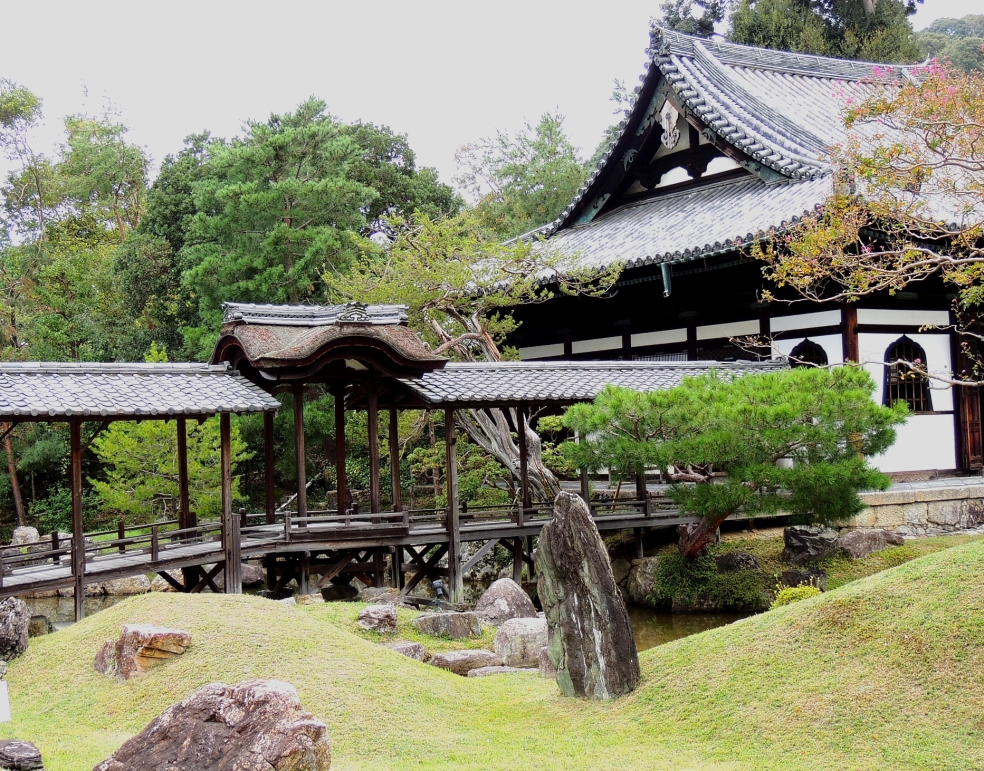
The rock garden is vast, said to evoke an ocean. Whatever it means, the strong, defined shape, beautifully raked, and untouched- was very impressive.
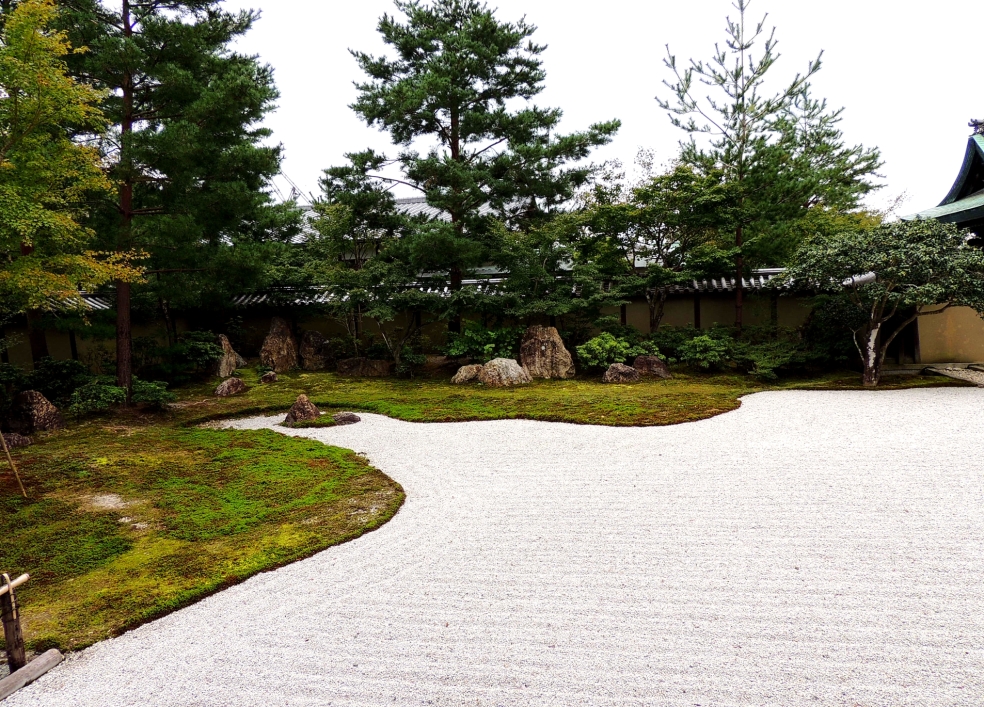
The bamboo grove and steps, towering high above the gardens, face towards the North-East- the direction from which evil spirits would appear. The thicket of bamboo was considered to impede their progress and put them off.

Weeping sprays of Polygala myrtifolia were draped throughout the garden, and flowering hostas, a very pretty small-leafed variety, punctuated the moss by shrine stones at the entrance to the garden. It was an afternoon of delicate detail and attention- which seemed to be a good way of allowing the gardening to enter your soul.
